Is the sequel to Ruroc’s popular Atlas helmet better than the original?
The Ruroc Atlas 2.0 is the latest motorcycle helmet from Ruroc, one of the United Kingdom’s top helmet companies. They sent me a test sample of the Atlas 2.0 motorcycle helmet to test out before the product launch.
I made a simple agreement with Ruroc: They would send me a free helmet to test out, and in exchange I would keep give it a fair, no non-sense, unbiased review. I’ve had the helmet for about a month now, during which time I had to keep Ruroc’s secret. It’s time to spill the beans.
In this Ruroc Atlas 2.0 review I’ll be taking a look at the Atlas 2.0, giving you some background on Ruroc as a brand, sharing some features that are new to the Atlas 2.0, and letting you know my thoughts on the Atlas 2.0 and whether or not it’s better than the original.

Who am I?
Anyone can tell you that they like or hate a helmet, so what makes me any different? Well, for a number of years, I made a living selling helmets. I worked at a dealership in Toronto, Canada, called Studio Cycle Group. I’ve sold everything from $49 half helmets to $1,149 Arai race helmets, sometimes to the same people.
For the last ten years I’ve been preaching the need for motorcyclists to go with fiberglass helmets over polycarbonate ones, ECE certification over DOT certification, and the importance of things like the right fit and shape, light weight, ventilation, and even color.
I’ve been sharing tips, info, reviews and how-tos with the motorcycle world for over ten years on YouMotorcycle.com. Lately I’ve also been doing the same on YouTube. But a long time ago I used to work at a motorcycle dealership, and selling helmets was my happy place.
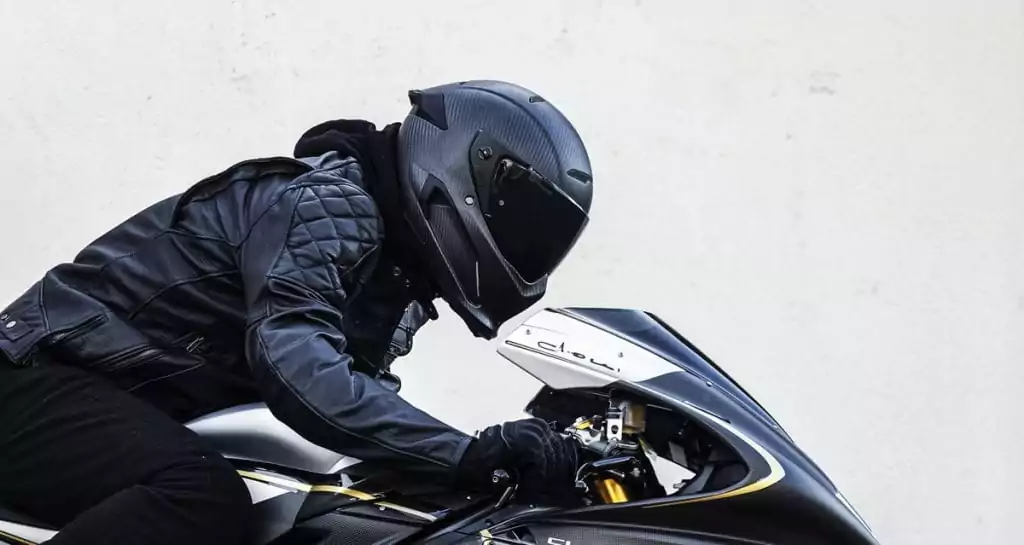
Who is Ruroc?
So now that it’s clear helmets are kind of my thing, who’s Ruroc? Well, sometimes if you want to appreciate what’s next in a space, you need to understand what’s already happened.
Years ago, over the UK, Ruroc was getting busy making changes that would revolutionize winter sports helmets. They created the first winter sports helmets that came fully integrated with both goggles and masks. Their products were designed to permanently remove fog in extreme climates, while at the same protecting your head and face.
Ruroc would eventually expand into the motorcycle world, and I, a motorcyclist who hates winter sports, can appreciate the importance of a company that understands safety, ventilation and vision.
Today Ruroc stands out by combining their expertise with sharp looks. Ruroc is one of those brands that pushes limits where aesthetics are concerned. Their designs are aggressive, non-traditional, and anything but boring. It’s one of the reasons why they have over a million fans on Facebook and hundreds of thousands more on Instagram. Looks are subjective, but these guys seem to have found their market.
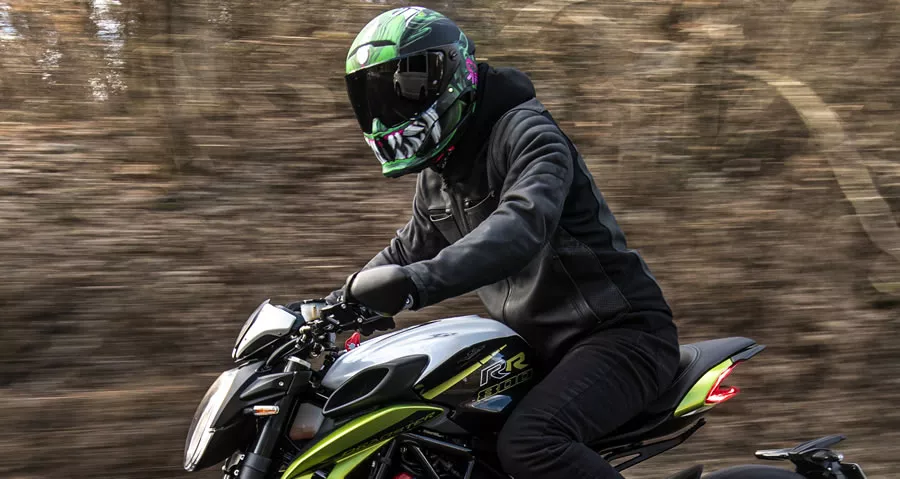
Ruroc’s Atlas 2.0 is the company’s reply to all of the feedback from the original
Let’s be really clear on something: the original Ruroc Atlas wasn’t a bad motorcycle helmet. It had attention to details that matter to motorcyclists showing that the company understands our needs. But it wasn’t perfect either.
Remember in my intro when I said that for a decade I’ve preached the need for fiberglass helmet shells over the polycarbonate shells you find in cheap motorcycle helmets? Ruroc took it one step further with the original Atlas motorcycle helmet and used T300 carbon fiber. That’s aerospace grade stuff.
Ruroc packed 6 vents in and 6 vents out, which matches or beats my personal Arai helmet that cost twice as much. They also made some sweet visors for it. Finally, they packed some extra goodies in there like making it Bluetooth-ready and a quick-connect chin-strap you can put on in seconds even with motorcycle gloves on.
The thing is, there were some complaints about the helmet. Some people said that the visor would come up while riding. Others complain of wind noise.
Now, I promised to keep this fair and no non-sense, so full disclosure: I haven’t tested out the original Atlas helmet myself. But from everything I’ve read up about them, the original Atlas proved that Ruroc wasn’t just a winter sports helmet company that also makes motorcycle helmets. Ruroc used the Atlas to demonstrate that they were going to take the time to learn to do something right.
The only question is… How good is the new one?
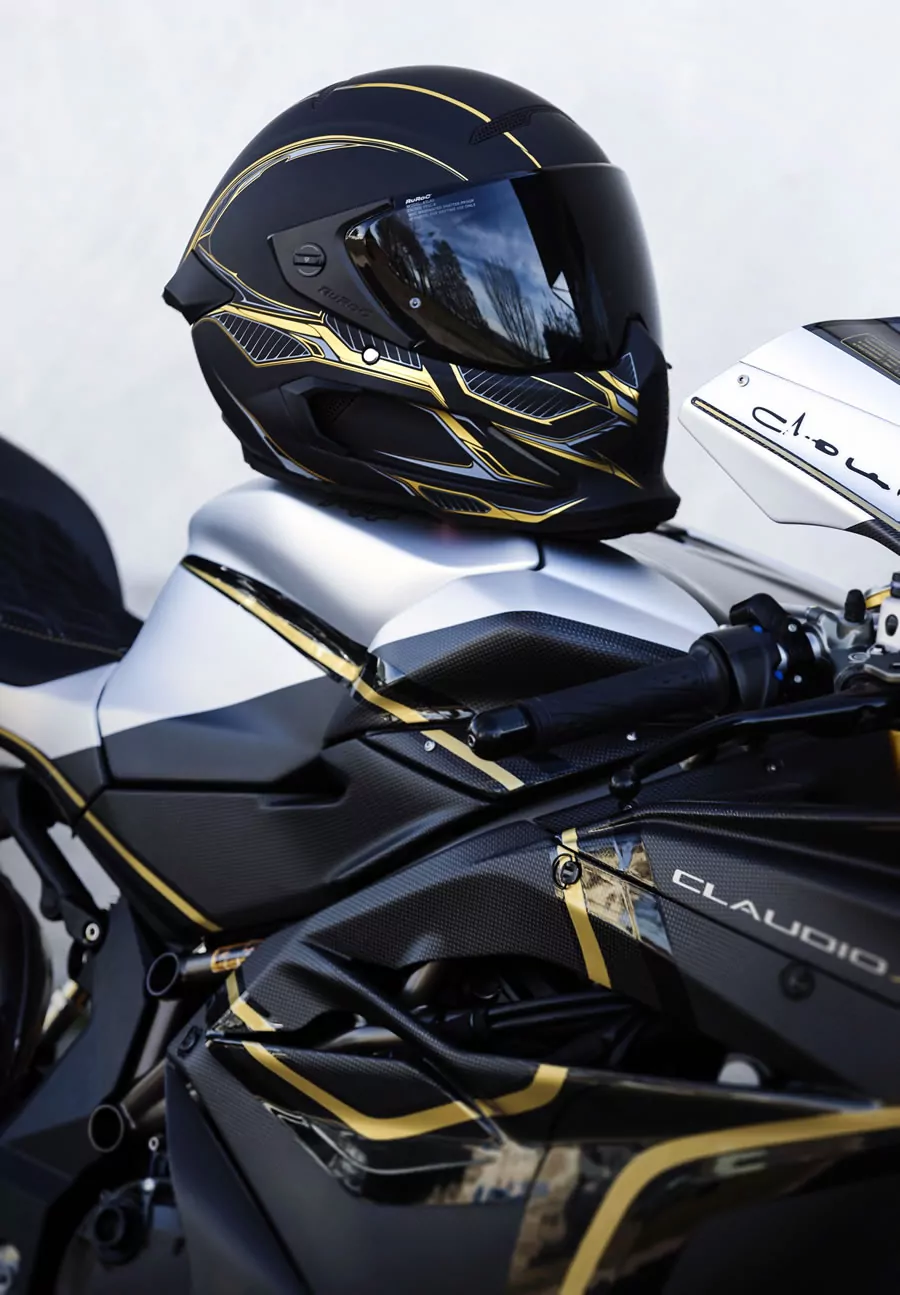
Ruroc Atlas 2.0 Review
This review will cover the following:
- Safety
- DOT Certification
- ECE
- Fit
- Shape
- Fitting
- Quality
- Construction
- Ventilation
- Noise
- Weight
- Finish
- Aesthetics
- Designs
- Visors
- Other cool features
- Summary
- Things I like
- Things I don’t like
- Conclusion
My point of reference/benchmark for this review will be other helmets in the $350-$750 range including the ICON Airframe Pro and the Arai Profile.
Safety
Here’s a crash-course (no pun intended) on motorcycle helmet safety standards:
DOT Certification:
This is a US-based government standard used in other countries like Canada. In order to reach this standard, a helmet must offer a certain amount of protection from impact (how the impact force is absorbed), resistance to penetration, how effective the retention system is, as well as visibility.
The Ruroc Atlas 2.0 is DOT certified, but the standard is actually quite low. For example, the DOT standard for visibility is a 105-degree field of vision, whereas most people actually have a 120-degree field of vision. Technically, a helmet can cut off your peripheral vision and still be DOT compliant. To make it worse, manufacturers have to self-assess their products. That’s why every anonymous factory in China will claim their helmet is DOT-compliant, when it’s really no safer than a bucket you can buy at Home Depot.
ECE Certification:
ECE 22.05 is a European standard for helmets that’s much more protective of motorcyclists than it’s American counterpart. For example, while the DOT allows 400 G of peak acceleration energy to smack your head through your helmet, a helmet must only let 275 G through the same test in order to reach ECE certification.
The Ruroc Atlas 2.0 is ECE 22.05 certified. That’s a great thing for motorcyclists and something we should expect from this price point. The ECE standards are not only greater than DOT standards, but they also test things that the DOT does not, like chin strap slippage, strap material abrasion resistance, failure load under tension, and durability of quick-release systems like the ones Ruroc uses.
SNELL Certification:
SNELL is an even more exigent standard from of the US, however, Ruroc has not had their helmet tested to this certification as of publishing.
Conclusion:
The Ruroc Atlas 2.0’s DOT certification means you can wear it anywhere in North America, but more importantly, the Atlas 2.0’s ECE certification means you can wear it confidently anywhere in North America or Europe.
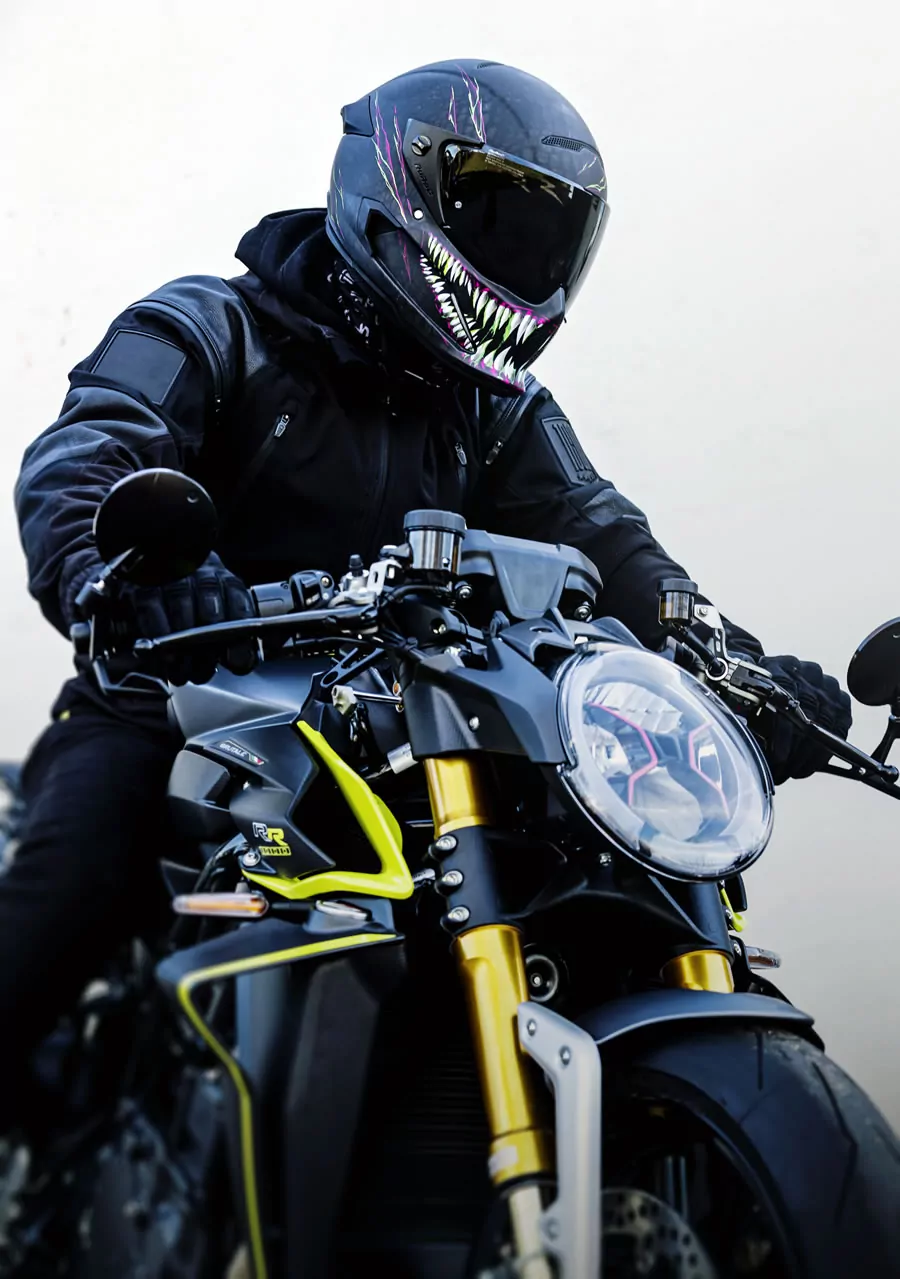
Shape/Fit
All of that safety is useless if you buy a motorcycle that doesn’t fit your head properly. Fit and sizing are not only critical to helmet safety, they’re important for your overall enjoyment of a helmet too.
Shape:
Ruroc’s helmets are made to fit intermediate oval headshapes. Typically Caucasians tend to have an intermediate oval headshape, whereas Asians tend to have a rounder headshape. If your head is noticeable longer than it is wide, the Ruroc Atlas 2.0 is right for you.
Fit:
The downside to not being able to buy a helmet you can physically try on, is making sure you get the exact fit that you need. To get around this, Ruroc has a size scale, so you can measure around your around, and the site will let you know what size to buy.
But what happens if the helmet arrives and the cheeks pads are too thick, or too thin, or something else is just a little bit off? That was a concern, as other brands sell cheek pads separately. That’s handy for riders with fat cheeks. They can just buy thinner cheek pads, so they have a helmet that fits them perfectly around the crown of the head, and the face. So I asked a Ruroc rep who said: “If customers are having problems with cheek pads or anything interior wise we tend to just send out the different size of what they want completely free of charge.”
Conclusion:
Buying a motorcycle helmet is very personal, all of our heads are shaped and sized differently, but Ruroc does a good job of making the process easier. With every other helmet manufacturer out there, you’ll have to pay $50 or even $75 for differently sized interior padding. The fact Ruroc will send them to you for free shows a serious commitment to customer care.
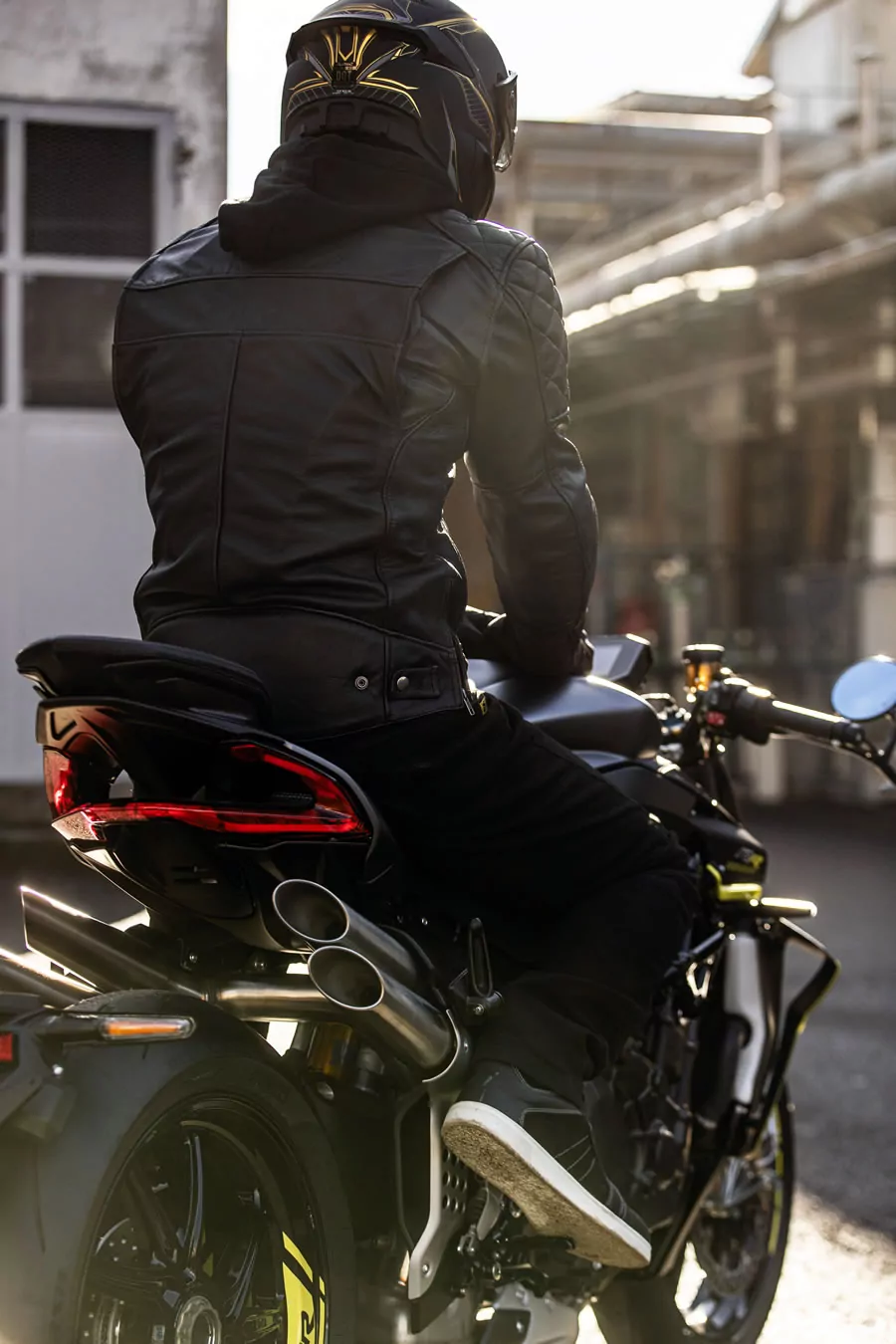
Quality
There are a number of factors that speak to a motorcycle helmet’s level of quality. Let’s see how the Ruroc Atlas 2.0 does.
Construction:
Like the original Atlas, the Ruroc Atlas 2.0 is made from an aircraft-grade carbon shell. That adds to Ruroc’s manufacturing cost but it also makes helmet stronger and more protective while making it weigh less. I was very happy with the helmet rigidity and it’s light weight.
Ventilation:
The Atlas 2.0 has as many pairs of vents as Tom Brady has SuperBowl wins. That’s six vents in, and six vents out. Unlike Arai, Ruroc does this without having any vents on the visors themselves. As far as numbers, ICON’s Airframe Pro Carbon has nine intakes and five exhausts, but at six a piece, the Ruroc Atlas 2.0 is pretty fantastic in it’s own rights and will keep you cool on hot days.
Noise:
Having a half dozen vents should make for a bit more noise, but Ruroc off-sets this by using foam dampeners around your ears to quiet the noise which reduces rider fatigue. At the time of writing, we’ve been hit a few weeks of back to back snowfalls. I haven’t been able to test for highway noise. When I have gone out, I’ve been too bundled up to give wind noise a fair testing right now.
Weight:
Ruroc scores a big win in the weight category. My size Large was advertised as 1.450 kg or 3.2lbs and a scale test proved that to be 100% accurate. This makes the helmet as light as ICON’s AirFrame Pro Carbon, and half a pound lighter than the non-carbon ICON AirFrame. Not bad!
Finish:
There’s no wiggle, creaks, or rough edges to this helmet. Everything is built solidly and well-finished. From the inside out, the stitching, pads, chin guard, strap, all show a high level of attention to detail.
Conclusion:
Quality is premium consistent.
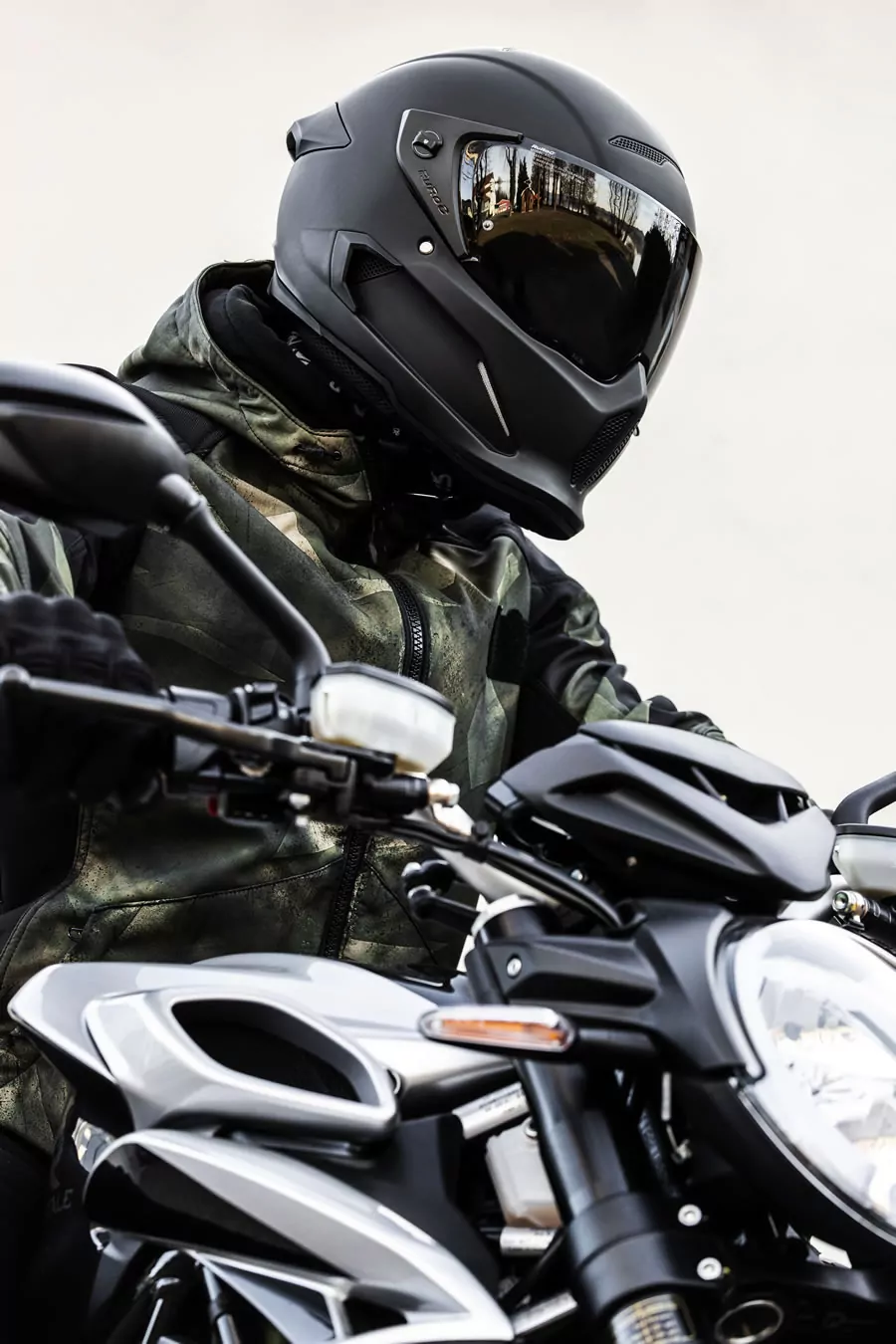
Aesthetics
Ruroc is known for pushing the limits in the style department.
Designs:
At this time, it seems Ruroc will be launching the Atlas 2.0 with 14 different designs. There’s a lot of variety to them, from the reflective Mercury (my favorite), to traditional looks like the Velos, and wild ones like the Toxin. Ruroc hit the nail on the head where looks are concerned, offering something for everyone.
Visors:
Ruroc’s visors are pretty spectacular. They come in a half dozen colors and now use pinlocks to keep the visors locked down while you ride. They also offer anti-fogging coating to help keep visibility clear. If fog is a big concern, check out my article on everything you need to know about helmet fog.
Conclusion:
Ruroc lives up to their reputation of making helmets that look cool.
Other cool features
Ruroc’s Atlas 2.0 also comes with some extra features worth mentioning that we don’t typically see in other helmets.
Magnetic chin strap:
Admittedly, this took a while to get used to, but it’s a little like push-button start, once you have it, you’ll never want to go back to the old way of doing things.
Emergency release straps:
The helmet also features emergency release pads which release the cheek pads from the helmets, and help emergency medical responders get your helmet off you if there is risk of a head, neck, or spine injury.
Bluetooth ready:
The helmet is plug and play ready to synch up with Ruroc’s Atlas Shockwave Audio System for handling music streaming and phone calls with no need to attach extra stuff to the outside of your helmet.
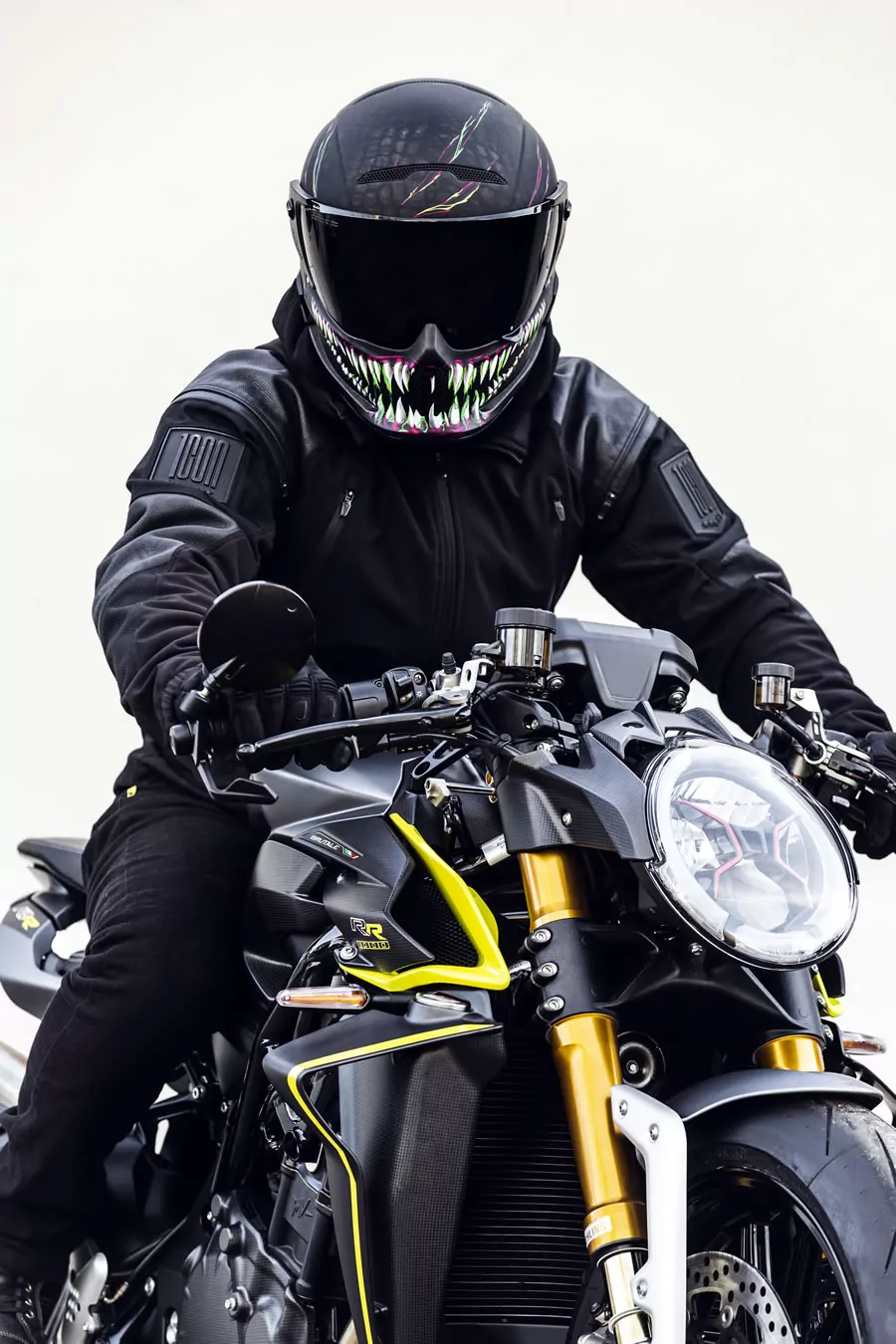
Summary
After having a chance to spend some time with the Ruroc, as well as an hour sitting at my desk writing this review wearing the helmet, here are some final thoughts on the Atlas 2.0:
Things I liked:
First, Ruroc proved that they weren’t just a winter sports helmet company that got into motorcycle helmets. Now they’re doubling down on that. These guys seem committed to listening to what riders have to say and have built a new helmet that’s even better than the first.
They’ve found a way to leverage modern aesthetic and market demand, and create some wild and out there graphics, while at the same time offering some solid and traditional designs for anyone who only wants to look a little different. The graphics look good without plastering the logo all over the helmet like a certain other manufacturer likes to do.
The ECE certification and the number of vents make me feel confident and excited to hit the road wearing this helmet in the spring time.
Things I disliked:
Ruroc doesn’t really say much about where the helmet was made. You won’t find it on the helmet, on the box, or in the manual that it comes with, but according to Ruroc, the main protective components (the helmet shells and EPS liners) are made in Italy, while the graphics, painting, and final assembly is done in China.
A matte black helmet is always going to get fingerprint marks and smudges on it, and this helmet is no different.
Not being able to try-before-you-buy is always going to make things a little more difficult for a motorcycle helmet manufacturers. Luckily, Ruroc understands that going direct to consumer can be tricky. They seem willing to go a step further to help their customers. Maybe it’s not all bad.
Conclusions:
If you’re looking at the Ruroc catalogue and there’s a certain style that gets you excited, I wouldn’t steer you away from this helmet. The Atlas 2.0 seems to have started on a solid platform, and then made improvements from there. It shows that Ruroc is committed to producing quality motorcycle helmets.
Some have called Ruroc’s original Atlas “a little Instagramy”. We think the Atlas 2.0 shows that Ruroc is serious about making a premium lightweight motorcycle helmet, with all the bells and whistles. I just wish the spring would hurry so I could take some extended rides with it.
 YouMotorcycle Motorcycle Blog – Motorcycle Lifestyle Blog, MotoVlog, Motorcycle Reviews, News, & How-Tos
YouMotorcycle Motorcycle Blog – Motorcycle Lifestyle Blog, MotoVlog, Motorcycle Reviews, News, & How-Tos
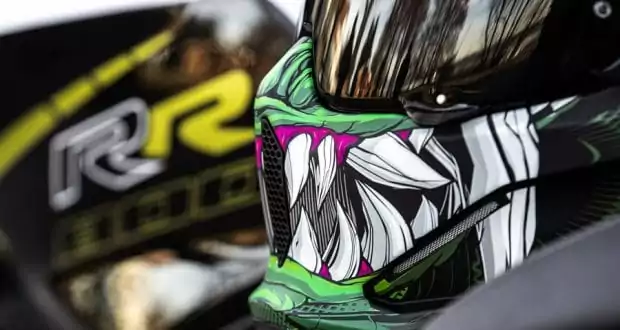
Regarding your dislike with the online-to-consumer selling strategy of Ruroc, actually, there are brick and Mortar resellers of Ruroc Helmets. One I know in NYC is Filipachi. Met the Ruroc owners there too, really nice people.
Good to know! I haven’t seen any up here in Toronto, Canada, but I’ll keep my eyes open and my fingers crossed.
I’m a year late, but thanks for writing this. Shoutout to a fellow Ontario homie also!
I was just browsing their catalogue as my airframe is very tight on the front of my forehead, giving me a headache not even an hour in to riding.
Do you think the Ruroc would be a little more forgiving in that respect?
Thanks in advance and I’m heading over to check out your channel. I have one also but won’t plug it here.
I think it might be time to stop buying helmets online, and go to a dealership where you can try it on and where it around the store for a good 20-30 minutes and see how it feels before you buy. A little harder with COVID, but if you’re getting pain in one specific part of your head, from your helmet, that means the shape is all wrong for you.
I am looking for a quality helmet for my touring bike. I need to replace my aging line of helmets, and interested in the new Ruroc. Most of my experience is off-road and on the street/track with sport bikes. My street helmets have all been track oriented. I noticed my favorite race inspired helmets are best suited to a tuck position for ventilation and vision as opposed to the more upright position on my touring bike. S
So hoping you might address this aspect – specifically I am most interested in the peripheral vision of the Ruroc.
What bike would you be riding on so I can try to get what angle you’d be sitting at
Two specific bikes an HD Street Glide and a Bobber . Do not plan to use this helmet for the trusty old Ducati. All my helmets; Shark, Bell, Scorpion, are track oriented and they seem to favor the tuck position for FOV and venting. So wondering if you noted any of the Ruruc’s related characteristics.
Have you been able to test it on longer rides yet? I am seriously looking at this but concerned a bit on wind noise… The chin curtain and neck rolls look promising though…
Not yet no. They were going to send me a different sized helmet so I’m still wearing my Arai until the new Ruroc comes in.
Thanks for the brilliant review! Recently ordered my “out there” Toxin version.
Bit of an odd question but.. Do you possibly know the name of the jacket in picture just above the “Quality” section? Been looking for a clean jacket to highlight the new helmet.
Hey Viktor, congrats on your new helmet. I reached out to Ruroc as that was one of their pictures, here’s the response I got: “I looked into this and it appears to be an Icon motorsports jacket! It might not be available as it was purchased a while ago, but worth a check!” Hope that helps a bit.
It looks like an Icon Basehawk, sadly I believe its been discontinued.
Nothing to do with the helmet, but I like your jackets and would like to know what brands, models are they if you happen to know!
Thank you for the article by the way, very informative!
Read the other comments, you’ll find this was already answered ;)
What was the wind noise verdict in the end?
It’s god aweful. I have the atlas 2.0 and it’s extremely loud at speeds.
What motorcycle are you riding? The bike you’re on, along with your height, handlebars, etc. are going to effect the angle your helmet is getting wind at. Curious what your setup is.
Hi, do you guys proofread your articles before posting them to the internet? This one and 1 other I’ve read were full of sentences that were missing words that were needed in order for them to make sense.
By “you guys” I’m assuming you mean my dog and I? Yes. I do all the writing, and my dog does all the proof reading. It’s been this way for over 11 years. If you have issues with the editing take it up with her. If your one man one dog website works better than mine, congratulations to you lol